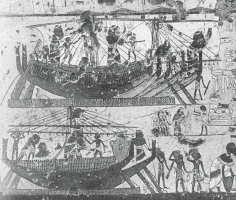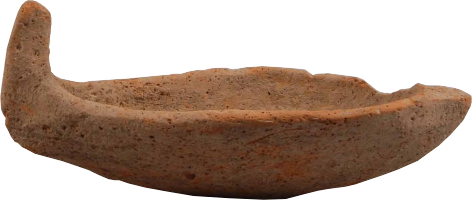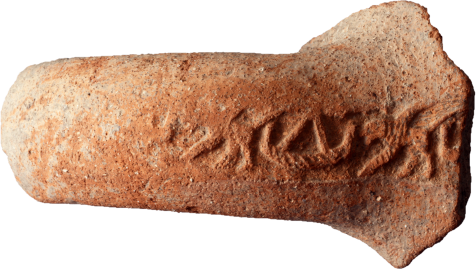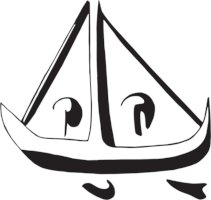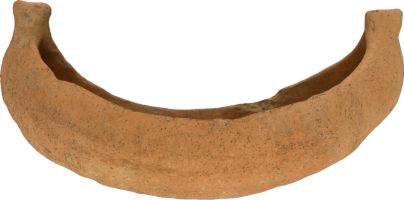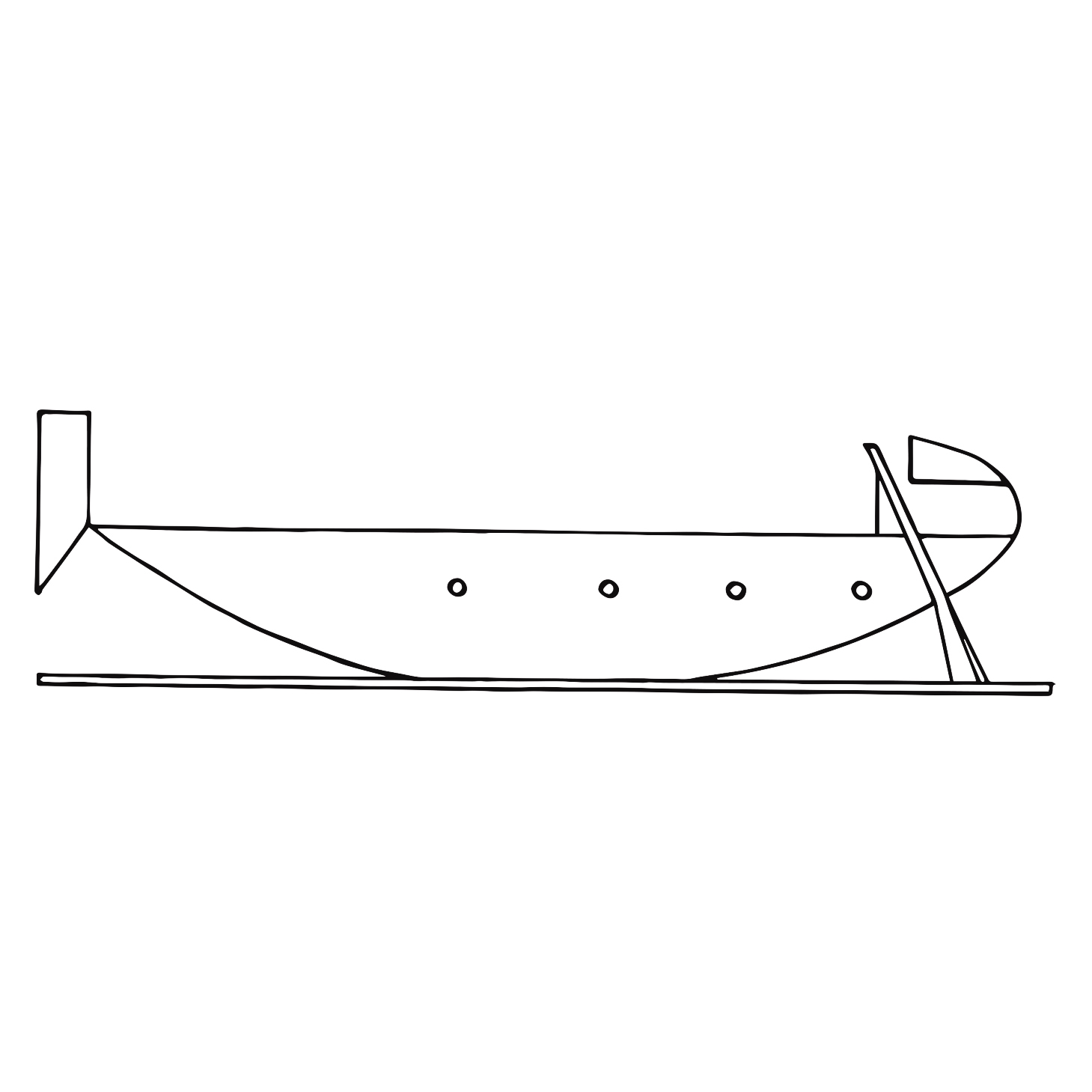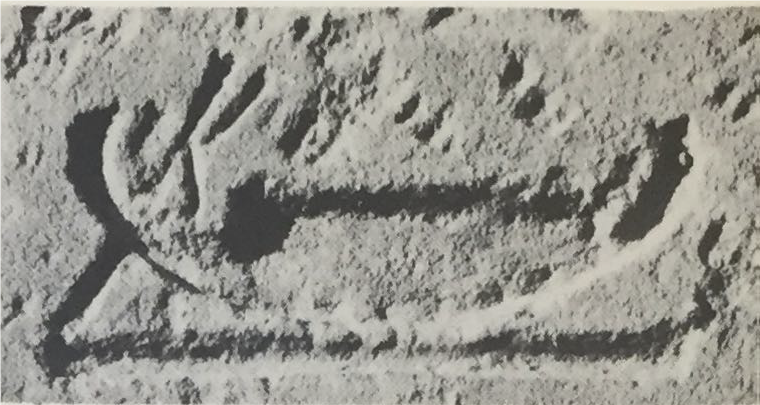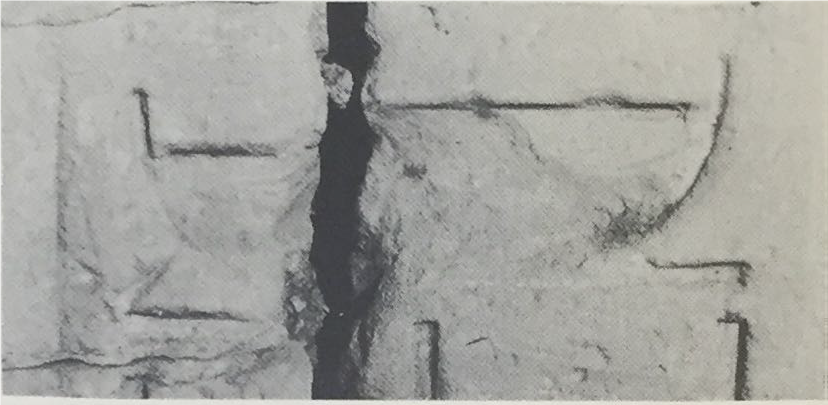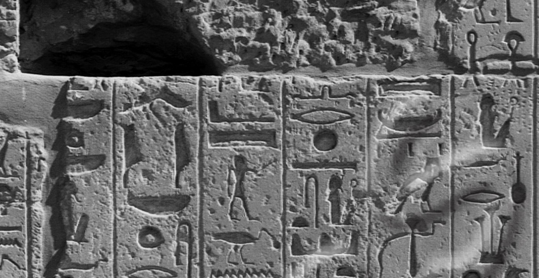Ramses II mnš determinatives: comparable to the Syro-Canaanite ships represented from the tombs of Nebamun and Kenamun in all points but one, the presence of three masts on L5a. Crescentic hull that curves smoothly upward into high vertical posts with undecorated extremities. The stempost has the distinctive Syro-Canaanite extremity that flares out, with a concave outer edge and a flat top. The sternpost has an even simpler rectangular extremity. This slight distinction between the two posts is identical to the Nebamun ship. Above the sheer running the length of the ship is a screen filled by a row of vertical stanchions. There are two quarter rudders with oval oar blades. There is a central mast with a forestay and backstay. There are two more masts – of roughly the same height and thickness at the bow and stern. Basch has proposed that these represent a lifting mechanism used for the loading of heavy cargo. This was performed laterally, thus requiring a quay.
Ramses II “ships of fighting” determinative (Tanis Rhetorical Stele): identical hull shape to the Kenamun ships, with high symmetrical stems ending in undecorated extremities. The mast and bulwark are omitted.
Ramses III mnš determinative: more abstracted and minimalist representation. The crescentic hull is merged with the bulwark while the sheer demarcation is omitted. Roughly midway below the horizontal line representing the upper edge of the screen, there are four small rounded holes (scuppers/oarports?). The stempost is very abstracted and rectangular, but preserves the overall impression of a high post rising vertically with a flat undecorated extremity. The sternpost curves inward and ends in a flaring out extremity with a flat tip.
mnš ship determinative
L5a-e
Ramses II (1290-1224 B.C.)
L5a (A): exterior wall of temple of Ramses II, Abydos
L5e (K1): exterior face of the southern wall of the Hypostyle hall at Karnak
L5b (K2): segment of wall between the 9th and 10th pylons at Karnak
L1: anterior face of the west Pylon of the temple of Luxor
L2: exterior wall of the temple of Luxor, near mosque of Abbou el Haggag
L5d: Medinet Habu, Year 8 inscription
stone relief
n/a
Artzy 1987: 81, fig. 10; Basch 1978; 1987: 65-66, no. 112; Emanuel 2014: fig. 9b; Grimal and Allouche 2012: fig. 7; Kuentz 1928: 248, pl. VI, 7; Mark 2017: 74-75, 78, fig.4; Sauvage 2012: 236-38; Wachsmann 1998: 47, fig. 3.10
In the Poem of Pentaur celebrating the military victory of Ramses II over the Hittites at the Battle of Kadesh (1274 B.C.) there is a passage that clearly identifies a type of ship called mnš with a merchantman: “I have given to thee (Seti I) a ship (mnš), bearing cargoes upon the sea, conveying to thee the great [marvels] of God’s Land, and the merchants doing merchandising, bearing their wares and their impost therefrom in gold, silver, and copper” (BAR III: 274).
Kuenz has identified a very particular determinative used for the mnš ship, with slightly different variations, in five inscriptions of Ramses II in the temples of Abydos, Karnak and Luxor. Basch points out that this is a very distinctive hieroglyph that does not occur in canonical versions – a point that is made particularly salient in light of the fact that it is employed within the same text among many examples using the canonical hieroglyph for denoting a ship. The distinction is therefore clearly intentional and the determinative should be taken as being descriptive in nature, ie depicting a mnš ship of the period of Ramses II. Of the five versions, L1 is now virtually lost, while L2 is in such a poor condition that it can no longer be verified, except to say that it does not resemble in shape the canonical version. Versions K1 and K2 are still visible, and show that Kuenz was rather liberal in his transcription. Version A from Abydos is the best preserved and most detailed. It was also reproduced fairly faithfully.
The mnš determinative occurs again in the reign of Ramses III, where it is found on the Medinet Habu Year 8 inscription, as one of three different types of ships used by the Egyptians against the “Sea people.” In this case, its use appears to have been for the transport of soldiers and/or supplies.
| Reign | Date | Source |
|---|---|---|
| Amenhotep II | c. 1430-1420 B.C. | Fresco, Tomb of Nebamun (TT 17), royal scribe and physician. 1 Syro-Canaanite ship departing from the Levant |
| Amenhotep III | 1390-1352 B.C | Fresco, tomb of Kenamun (TT 162), mayor of Thebes, royal steward. A flotilla of Syro-Canaanite ships docked at an Egyptian port |
| c. 1380 B.C | four jars of incense given to the king by an Egyptian captain of a mnš-ship. | |
| Seti I | 1294/1290-1279 B.C | Abydos decree of Seti I, Nauri. fleet of mnš-ships built by king to fetch drug herbs from God’s land (Arabia) for the temple of Amon. Ship length specified as 100 cubits (c. 52 m). |
| Ramses II | 1279 B.C. | mnš-ship built by sent to God’s land (Arabia) to bring marvels to Amon. |
| post 1274 B.C. | mnš-ships to carry products of foreign trade to Amon | |
| Seti II | 1200-1194 B.C. | “Your ship (mnš) has come from Kharu (Syria, Asia, or Hurrian-lands), laden with all manner of good things” (Papyrus Anastasi IV 3, 10-11) |
| Ramses III | 1184-1153 B.C. | a fleet of querer, menesh and fon ships sailing on the Mediterranean and Red seas to transport goods |
| Year 8 | mnš-ships dispatched in an attack against the Sea Peoples | |
| Ramses IV | 1155-1149 B.C. Year 5 | Chancellor loads mnš-ships for a country or foreign port named […]bti |
| Smendes I (?) | c. 1075 B.C Year 5 | Report of Wenamun. 20 mnš-ships owned by Zakar Baal, king of Byblos, that have trade dealings with Smendes |
Version K1 and K2 are much simpler yet in both cases the screen running the length of the ship is present. Version A is the most detailed, yet considering that it is a determinative, we must assume that it still represents what is considered the essentials. By taking into account both the pictorial and textual attestations of this ship type, it is possible to deduce that 1) the mnš ship is a distinctly Syro-Canaanite design; and 2) it was eventually built in Egyptian shipyards under royal supervision. The earliest (iconographic) source comes from the reign of Amenhotep II, although it is very likely that its introduction should be traced to Thutmose III and his numerous campaigns in the Levant. Dated to his reign is a document mentioning Syro-Canaanite shipwrights in charge of building and repairing ships in the Egyptian dockyard of Prw-nfr (at or near Memphis). During his fifth campaign, the king also seized two ships in north Syria. The earliest textual attestation of a mnš ship dates to the reign of Amenhotep III, after which it is regularly attested throughout the Ramesside period and as late as the Report of Wenamun. Mark’s claim that the mnš ship is Egyptian and was short lived is thoroughly contradicted by its lengthy attestation outside Egypt (Mark 2017: 78).
Artzy, M. 1987. “On Boats and Sea Peoples,” BASOR 266: 75-84.
Basch, L. 1978. “Le Navire mns et autre notes de voyage en Egypte,” MM 64: 99-123.
―――. 1987. Le musée imaginaire de la marine antique. Athens: Institut Hellénique pour la preservation de la tradition nautique.
Emanuel, J.P. 2014. “Sea Peoples, Egypt, and the Aegean: Transference of Maritime Technology in the Late Bronze Age-Early Iron Transition (LH IIIB-C),” Aegean Studies 1.1: 21-56.
Grimal, M. N. and M. Francis-Allouche. 2012. “Nouvelles recherches archéologiques à Byblos,” CRAI 1 : 279-302.
Kuentz, Ch. 1928. La Bataille de Qadech. Mémoires publiés par les membres de l'Institut français d'archéologie orientale du Caire 55. Le Caire: impr. de L'Institut français d'archéologie orientale.
Mark, S. 2017. “The Ship Depiction in the Tomb of Nebamun: The First Egyptian Seagoing Ship without a Hogging Truss,” JAEI 16: 68-86.
Sauvage, C. 2012. Routes maritimes et systèmes d'échanges internationaux au Bronze récent en Méditerranée orientale. Lyon: Maison de l'Orient et de la Méditerranée-Jean Pouilloux.
Wachsmann, S. 1998. Seagoing Ships & Seamanship in the Bronze Age Levant. College Station, TX: Texas A&M University Press.



